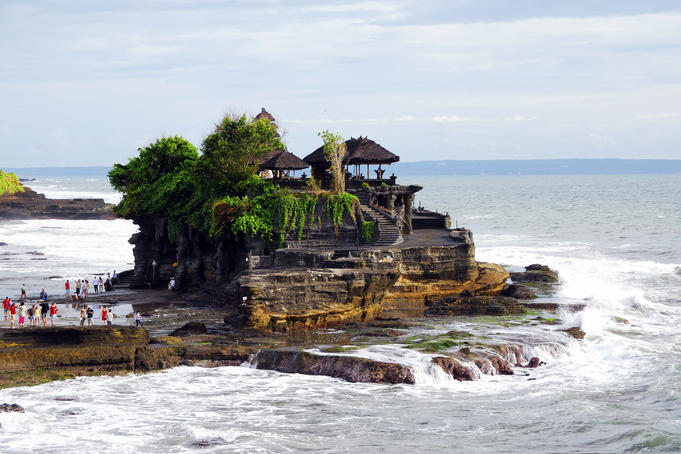
Life in Bali is very communal with the organization of villages, farming and even the creative arts being decided by the community. The local government is responsible for schools, clinics, hospitals and roads, but all other aspects of life are placed in the hands of two traditional committees, whose roots in Balinese culture stretch back centuries. The first Subak, concerns the production of rice and organizes the complex irrigation system.
Everyone who has a sawah, or padi field, must join their local Subak, which then ensures that every member gets his fair distribution of irrigation water. Traditionally, the head of Subak has his sawah at the very bottom of the hill, so that the water has to pass through every other sawah before reaching his own. The other community organization is the Banjar, which arranges all village festivals, marriage ceremonies and cremations, as well as form of community service known as Gotong Royong.
Most villages have at least one Banjar and all males have to join one when they marry. Banjar, on average, have a membership of between 50 to 100 families and each Banjar has its own meeting place called the Bale Banjar. As well as being used for regular meeting, the Bale (pavilion) is where the local gamelan orchestras and drama groups practice.




Pura Tanah Lot temple, Bali

Celebrating Balinese New Year, Kuta Beach

Fishing boats and beach, Bali

Gomateshvara, Vindhyagiri Hill

Beach restaurant, Bali
Diners at sunset in beach restaurant.

Bali Arts Festival, Bali
Balinese woman dancing during the great youth gong kebyar compilation from Bangli and Gianyar regency, at Bali Arts Festival, Taman Wedhi Budaya Art Centre.

Ulu Danau Hindu temple, Lake Bratan
Ancient Ulu Danau Hindu temple on Lake Bratan.

Pura Tanah Lot, Bali
Pura Tanah Lot.

Ubud Water Palace, Bali
Ubud Water Palace (Pura Taman Saraswati) with lily pond in foreground.

Barong procession, Ubud
Barong procession and ceremony.

An ornate stage for Gamelan musicians to perform during the Balinese Arts Festival.

Rejeng dancers squeezing into postion.

Wood carved Topeng masks.

Belangan Beach.

Tidak ada komentar:
Posting Komentar